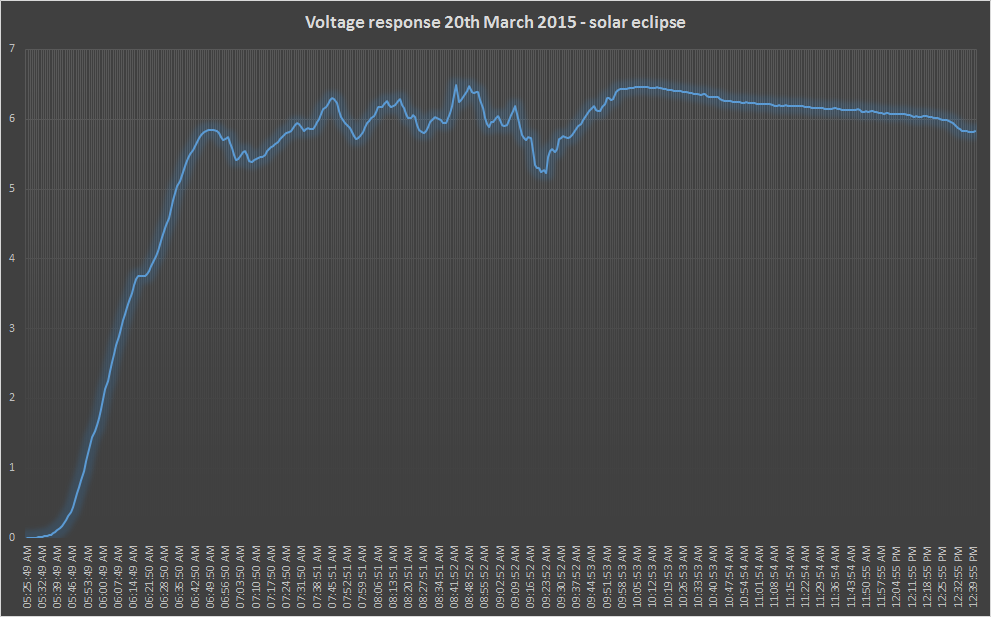Solar eclipse 2015
This Friday morning was marked by a solar eclipse. In some parts the UK there was up to 80% coverage of the sun by the moon. The last eclipse before then was on August 11th 1999 and unfortunately I can't say I remember much about it, I'm not sure that the effect of it was visible from East England.
Enter the camera oscura
Now it's never been wise to gaze directly at the sun and I didn't have time to buy some official eye wear either, so I put together a simple pinhole projector and used this to view the event. I cut a hole around 1cm x 1cm in a shoe box and then taped some foil over the hole and made a small pinhole with a sewing needle. White paper was then placed over the opposite side and it looked like this:

The projected image was tiny, probably about 2.5-3mm across but cleared showed the outline of the sun being obscured.
Here is a small picture showing the projected image inside the box.

Considering that this was a last minute effort, I was happy with the results, it was only later that I realised if the pinhole had been further away from the projection plane that the image could be effectively blown up much larger and would become more detailed.
Solar energy production
It was predicted on the news that the amount of solar energy generated by photovoltaic cells would drop during the peak of the eclipse so I left my voltage logger running and have included the results in the blog post. You see a marked drop at around the height of the eclipse which slowly returns to normal and levels off.
You can read how to log analog sensor values here with Arduino.

My tech blogging
I'm also a Docker Captain (community evangelist), developer and published writer with Linux User and Developer magazine.
Here are some links to my most popular blog series:
-
Learn about Raspberry Pi and Docker
-
Checkout my Arduino projects
You can follow me on Twitter here - @alexellisuk.